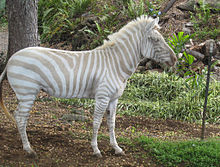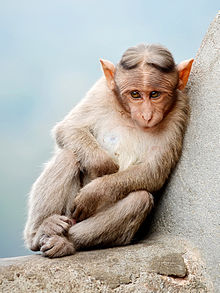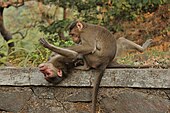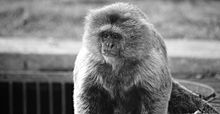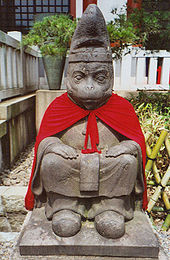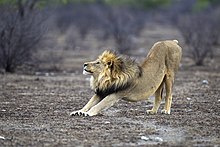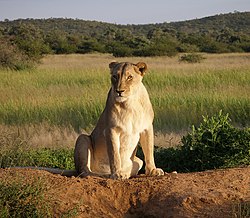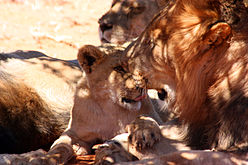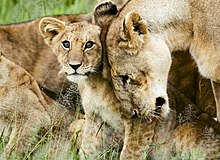Zebra
history.
Zebras (/ˈzɛbrə/ ZEB-rə or /ˈziːbrə/ ZEE-brə) are several species of African equids (horse family) united by their distinctive black and white striped coats. Their stripes come in different patterns, unique to each individual. They are generally social animals that live in small harems to large herds. Unlike their closest relatives the horses and donkeys, zebras have never been truly domesticated.There are three species of zebras: the plains zebra, the Grévy's zebra and the mountain zebra. The plains zebra and the mountain zebra belong to the subgenus Hippotigris, but Grévy's zebra is the sole species of subgenus Dolichohippus. The latter resembles an ass, to which it is closely related, while the former two are more horse-like. All three belong to the genus Equus, along with other living equids.
The unique stripes of zebras make them one of the animals most familiar to people. They occur in a variety of habitats, such as grasslands, savannas, woodlands, thorny scrublands, mountains, and coastal hills. However, various anthropogenic factors have had a severe impact on zebra populations, in particular hunting for skins and habitat destruction. Grévy's zebra and the mountain zebra are endangered. While plains zebras are much more plentiful, one subspecies, the quagga, became extinct in the late 19th century – though there is currently a plan, called the Quagga Project, that aims to breed zebras that are phenotypically similar to the quagga in a process called breeding back.
Etymology
The name "zebra" in English dates back to c. 1600, from Italian zebra, perhaps from Portuguese, which in turn is said to be Congolese (as stated in the Oxford English Dictionary). The Encarta Dictionary says its ultimate origin is uncertain, but perhaps it may come from Latin equiferus meaning "wild horse"; from equus ("horse") and ferus ("wild, untamed"). The word was traditionally pronounced with a long initial vowel, but over the course of the 20th century, the pronunciation with the short initial vowel became the usual one in the UK and Commonwealth. The pronunciation with a long initial vowel remains standard in the United States.Taxonomy and evolution
See also: Evolution of the horse
Zebras evolved among the Old World horses within the last 4 million years. It has been suggested that zebras are polyphyletic
and that striped equids evolved more than once. Extensive stripes are
posited to have been of little use to equids that live in low densities
in deserts (like asses and some horses) or ones that live in colder
climates with shaggy coats and annual shading (like some horses). However, molecular evidence supports zebras as a monophyletic linage.Classification
There are three extant species. Collectively, two of the species have eight subspecies (seven extant). Zebra populations are diverse, and the relationships between, and the taxonomic status of, several of the subspecies are not well known.- Genus: Equus
A cream zebra in captivity
The mountain zebra (Equus zebra) of southwest Africa tends to have a sleek coat with a white belly and narrower stripes than the plains zebra. It has two subspecies and is classified as vulnerable.
Grévy's zebra (Equus grevyi) is the largest type, with a long, narrow head, making it appear rather mule-like. It is an inhabitant of the semi-arid grasslands of Ethiopia and northern Kenya. Grévy's zebra is the rarest species, and is classified as endangered.
Although zebra species may have overlapping ranges, they do not interbreed. In captivity, plains zebras have been crossed with mountain zebras. The hybrid foals lacked a dewlap and resembled the plains zebra apart from their larger ears and their hindquarters pattern. Attempts to breed a Grévy's zebra stallion to mountain zebra mares resulted in a high rate of miscarriage. In captivity, crosses between zebras and other (non-zebra) equines have produced several distinct hybrids, including the zebroid, zeedonk, zony, and zorse. In certain regions of Kenya, plains zebras and Grévy's zebra coexist, and fertile hybrids occur.
Physical attributes
Size and weight
The skull of a Grant's zebra.
Stripes
The black and white stripes may have one or several functions.
The stripes are typically vertical on the head, neck, forequarters, and main body, with horizontal stripes at the rear and on the legs of the animal.
A wide variety of hypotheses have been proposed to account for the evolution of the striking stripes of zebras. The more traditional of these (1 and 2, below) relate to camouflage.
1. The vertical striping may help the zebra hide in the grass by disrupting its outline. In addition, even at moderate distances, the striking striping merges to an apparent grey. However, the camouflage has been contested with arguments that most of a zebra's predators (such as lions and hyenas) cannot see well at a distance, and are more likely to have smelled or heard a zebra before seeing it from a distance, especially at night.
2. The stripes may help to confuse predators by motion dazzle—a group of zebras standing or moving close together may appear as one large mass of flickering stripes, making it more difficult for the lion to pick out a target. It has been suggested that when moving, the stripes may confuse observers, such as mammalian predators and biting insects, by two visual illusions: the wagon-wheel effect, where the perceived motion is inverted, and the barberpole illusion, where the perceived motion is in a wrong direction.
3. The stripes may serve as visual cues and identification. Although the striping pattern is unique to each individual, it is not known whether zebras can recognize one another by their stripes.
4. Experiments by different researchers indicate that the stripes are effective in attracting fewer flies, including blood-sucking tsetse flies and tabanid horseflies. A 2012 experiment in Hungary showed that zebra-striped models were nearly minimally attractive to tabanid horseflies. These flies are attracted to linearly polarized light, and the study showed that black and white stripes disrupt the attractive pattern. Further, attractiveness increases with stripe width, so the relatively narrow stripes of the three living species of zebras should be unattractive to horseflies.
5. Stripes may be used to cool the zebra. Air may move more quickly over black light-absorbing stripes while moving more slowly over white stripes This would create convection currents around the zebra that would cool it. One study analyzes that zebras have more stripes in hotter habitats.
Gaits
Zebras have four gaits: walk, trot, canter and gallop. They are generally slower than horses, but their great stamina helps them outrun predators. When chased, a zebra will zig-zag from side to side, making it more difficult for the predator to attack. When cornered, the zebra will rear up and kick or bite its attacker.Senses
Zebras have excellent eyesight. It is believed that they can see in color.Like most ungulates, the zebra's eyes are on the sides of its head, giving it a wide field of view. Zebras also have night vision, although not as advanced as that of most of their predators.Zebras have excellent hearing and have larger, rounder ears than horses; like other ungulates, zebras can turn their ears in almost any direction. In addition to superb eyesight and hearing, zebras also have acute senses of smell and taste.
Diseases
Being an equid, zebras are subject to many of the same common infections and diseases of the domestic horse.- Parasites:
-
- Equid intestinal roundworms parascaris sp. and Strongylus vulgaris
- Roundworms of the lungs
- Botfly larvae in the zebra's stomach
- Lice
- Mange
- Ticks, which can serve as vectors for other diseases including Babesia
- Salmonella infection of the intestine
- Pneumonia and pleuritis
- Acute heart lesions due to stress
- Tetanus
- Anthrax
Communication
Zebra feeding on grass
Food and foraging
Zebras feed almost entirely on grasses, but may occasionally eat shrubs, herbs, twigs, leaves and bark. Their digestive systems allow them to subsist on diets of lower nutritional quality than that necessary for other herbivores.Reproduction
Female zebras mature earlier than the males, and a mare may have her first foal by the age of three. Males are not able to breed until the age of five or six. Mares may give birth to one foal every twelve months. She nurses the foal for up to a year. Like horses, zebras are able to stand, walk and suckle shortly after they are born. A zebra foal is brown and white instead of black and white at birth.Plains and mountain zebra foals are protected by their mothers, as well as the head stallion and the other mares in their group. Grévy's zebra foals have only their mother as a regular protector, since, as noted above, Grévy's zebra groups often disband after a few months.



